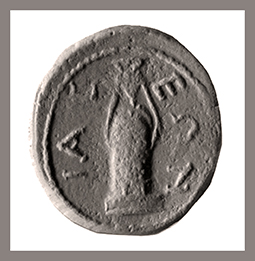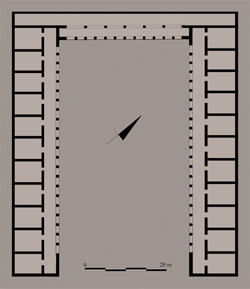Authors: R. Fabiani, M. Nafissi
Download article as .pdf: Ancora su Artemis Astiàs e Artemis Kindyàs. Prodigi, culti e storia a Iasos e Bargylia
 According to Polybius (16, 12, 2), the inhabitants of Iasos and Bargylia claimed that neither rain nor snow fell on the statues of two local goddesses, Artemis Astiàs and Artemis Kindyàs. An earlier paper attempted to clarify the nature of this wonder in relation to Greek religious and cultural tradition, and to contextualize it within the dynamics of rivalry between cities in the same region. The investigation continues with a review of what is known about the sanctuaries that housed the two statues, the role of the goddesses, and the integration of their cult into civic religion. In this respect, the present paper illustrates the institutional, figurative and devotional practices that developed in Iasos and Bargylia as a premise of, or parallel to, traditions about prodigies. Regarding Iasos, aspects such as the distinctive features of the epiclesis of Artemis Astiàs, the cult of the Apollonian triad at the sanctuary of Çanacık Tepe, and the role of Apollo and Artemis in political and religious life are examined from the perspective of the history of the city and within the framework of Graeco-Carian relations. Regarding Bargylia, in addition to the issue of the location of the sanctuary and its relationship with Kindye, the paper reconsiders the very early appearance of the image of the cult statue as a mintmark on the city’s coinage. It is suggested that this relates to the pre-existing fame of the statue’s prodigious properties.
According to Polybius (16, 12, 2), the inhabitants of Iasos and Bargylia claimed that neither rain nor snow fell on the statues of two local goddesses, Artemis Astiàs and Artemis Kindyàs. An earlier paper attempted to clarify the nature of this wonder in relation to Greek religious and cultural tradition, and to contextualize it within the dynamics of rivalry between cities in the same region. The investigation continues with a review of what is known about the sanctuaries that housed the two statues, the role of the goddesses, and the integration of their cult into civic religion. In this respect, the present paper illustrates the institutional, figurative and devotional practices that developed in Iasos and Bargylia as a premise of, or parallel to, traditions about prodigies. Regarding Iasos, aspects such as the distinctive features of the epiclesis of Artemis Astiàs, the cult of the Apollonian triad at the sanctuary of Çanacık Tepe, and the role of Apollo and Artemis in political and religious life are examined from the perspective of the history of the city and within the framework of Graeco-Carian relations. Regarding Bargylia, in addition to the issue of the location of the sanctuary and its relationship with Kindye, the paper reconsiders the very early appearance of the image of the cult statue as a mintmark on the city’s coinage. It is suggested that this relates to the pre-existing fame of the statue’s prodigious properties.

